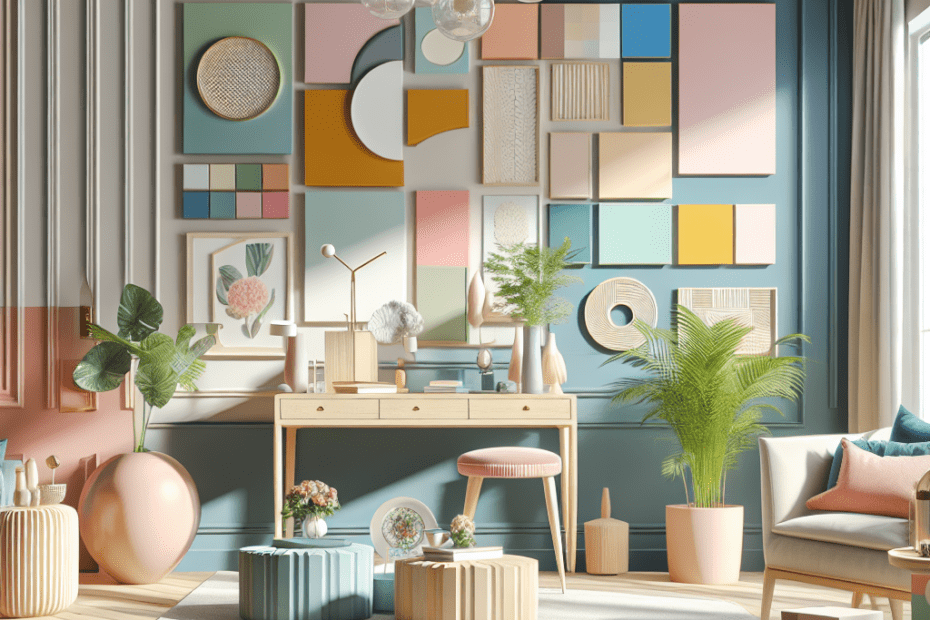“`html
Introduction
When it comes to interior design, many imagine a delicate balance of shades and tones creating a space that feels both inviting and exciting. Mixing pastels and bold colors is a trend gaining favorable traction. Homeowners and designers alike now look beyond traditional palettes to combine soft, serene pastels with daring, vibrant hues, producing an unexpected yet harmonious environment.
Understanding Color Theory
Color theory plays a significant role in interior design. It involves understanding how colors interact with one another. When mixing pastels and bold colors, it’s essential to consider complementary colors—a concept where colors on the opposite sides of the color wheel enhance each other’s intensity.
The Benefits of Mixing Pastels and Bold Colors
By blending pastels and bold colors, spaces achieve a dynamic aesthetic. According to Houzz, 70% of interior designers reported that this combination made spaces appear more lively and engaging. Pastels offer a soothing backdrop that allows bold colors to pop, resulting in striking visual contrasts without overwhelming the senses.
Step-by-Step Guide to Mixing Colors
- Start with a Neutral Base: Use neutral colors like whites, creams, or light grays to ground the room. This creates a canvas that ensures both pastels and bold colors shine.
- Choose a Pastel Palette: Select pastel colors that align with the mood you want to invoke. Whether it’s calming blues or playful pinks, the pastels will lay the foundation.
- Add Bold Accents: Choose bold colors that complement your pastels. A bright mustard or a deep emerald can add vibrancy and depth.
- Balance Proportions: Use the 60-30-10 rule: 60% for neutrals, 30% for pastels, and 10% for bold colors. This maintains balance and ensures no single color overwhelms the room.
- Accessorize Thoughtfully: Incorporate bold colors through accessories—think pillows, rugs, and artwork. Utilize pastels for larger elements like walls or furniture pieces.
Color Combinations to Explore
| Pastel | Bold Color | Suggested Use |
|---|---|---|
| Pastel Peach | Navy Blue | Living Room |
| Mint Green | Coral | Kitchen |
| Lavender | Charcoal | Bedroom |
| Baby Blue | Burgundy | Bathroom |
Incorporating Textures and Patterns
Beyond color, introducing different textures and patterns can further enhance the design. A soft pastel rug can contrast beautifully with a bold patterned wallpaper. According to Statista, 45% of consumers prefer using textures to elevate their living spaces, emphasizing the tactile experience alongside visual appeal.
Challenges and Considerations
Though the combination brings numerous benefits, they should be aware of certain challenges. Using too many bold colors might overwhelm and create a chaotic feel. They should also ensure that lighting complements the chosen palette, as both natural and artificial lights can alter how colors appear.
Key Takeaways
- Combining pastels with bold colors creates a vibrant and lively atmosphere.
- The 60-30-10 rule helps maintain balance in a room’s color scheme.
- Neutral bases support the harmonious integration of different color tones.
- Textures and patterns can enhance the aesthetic appeal alongside colors.
- Lighting plays a crucial role in highlighting the colors used in home designs.
FAQ
- Can pastels and bold colors match any room style?
Yes, with careful planning, any room can benefit from the mix of pastels and bold colors as long as balance is maintained. - What is the best way to introduce bold colors?
Start with small accents like throw pillows or a statement piece of art. - Do pastels make a room look bigger?
Yes, pastels can make a room feel larger due to their light and airy nature. - Is mixing patterns with colors recommended?
Mixing can add depth and interest, but they should ensure patterns complement the color palette. - How does lighting affect mixed color designs?
Different lighting can change the perception of colors, so they should test how colors appear under various lighting conditions.
“`
This blog post provides a comprehensive guide on mixing pastels with bold colors in home design while considering the color theory, benefits, and potential challenges. The FAQ section addresses common questions, helping readers make informed design choices.
